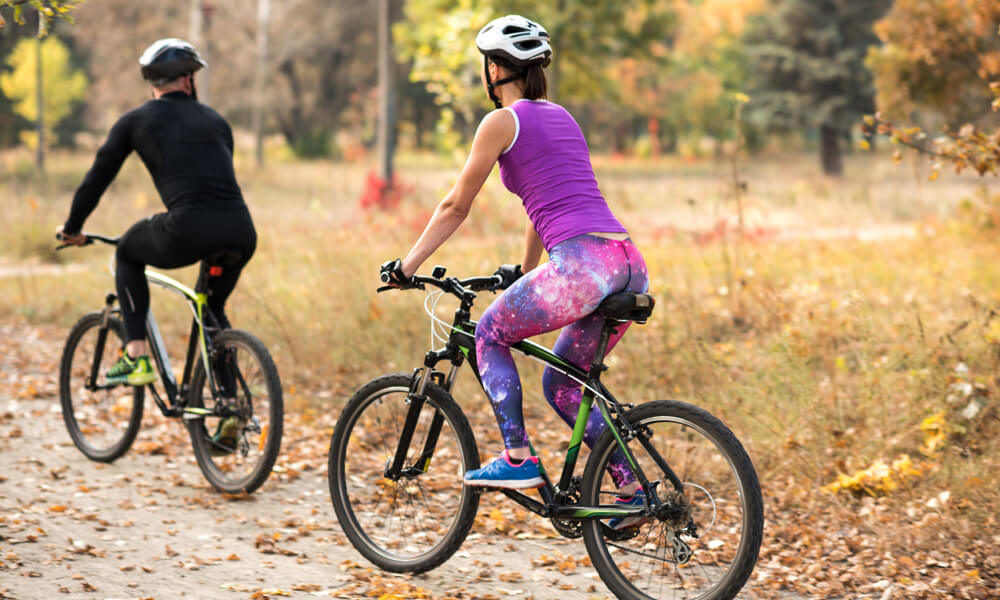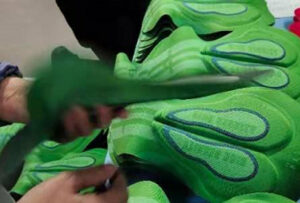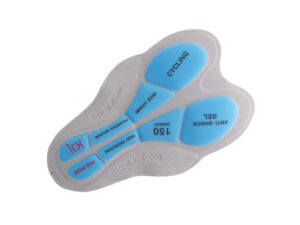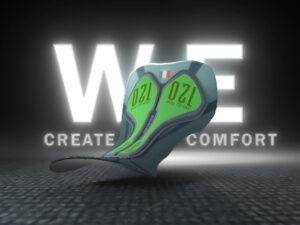For women who love cycling, whether it’s a leisurely ride through the park or a rigorous training session, comfort is paramount. However, discomfort, particularly from inadequate seat padding, can turn a joyful ride into a painful ordeal. This is where cycling pads for women come into play. Specially designed for female cyclists, these pads are crucial in preventing discomfort and pain, allowing for longer and more enjoyable rides. They provide essential support where it’s needed most, adapting to the unique contours of the female body. This introduction will delve into why investing in a high-quality cycling pad isn’t just a luxury—it’s a necessity for any serious female cyclist.
Table of Contents
Types of Cycling Pads
Cycling pads for women come in various types, each offering different benefits and suited to different cycling conditions. This section explores the most common types of pads—foam and gel—alongside a discussion on the materials used, all aimed at helping you make an informed decision.
Foam vs. Gel Pads: A Comparative Analysis
When selecting a cycling pad, the choice often comes down to two main types: foam and gel. Foam pads are lightweight and provide excellent support, making them ideal for longer rides where durability is key. They are also highly breathable, which helps in managing perspiration during intense rides. On the other hand, gel pads offer superior cushioning that molds to the body, providing immediate comfort and relief from the bike seat pressure. This subsection compares these options in detail, discussing their pros and cons in various cycling scenarios.
Anatomical Considerations for Women
The anatomy of female cyclists demands specific features in cycling pads. Women typically require a wider seat and a different cushioning placement to accommodate wider sit bones and protect sensitive areas. This part of the article discusses how different pad designs cater to these needs, focusing on features like varied thickness and strategic placement of padding to enhance comfort and performance without compromising on mobility.
Breathable Fabrics and Materials
The material of a cycling pad plays a crucial role in overall comfort and effectiveness. Modern cycling pads for women use advanced, breathable fabrics that wick away moisture and keep the skin dry. This is vital for preventing skin irritations and ensuring comfort during long rides. Materials such as polyester blends, cotton, and microfiber offer different levels of breathability, durability, and comfort. This subsection explores how these materials are used in cycling pads and their benefits to cyclists.
Benefits of Using Cycling Pads
Cycling pads are not just about physical comfort; they also provide several health and performance benefits. This section highlights the main advantages of using cycling pads, emphasizing why they are indispensable for any female cyclist.
Enhanced Comfort During Long Rides
The primary benefit of cycling pads is the increased comfort they provide. By cushioning the impact and reducing pressure on the pelvic area, pads allow for longer rides with minimal discomfort. This subsection details how enhanced comfort can improve endurance and overall performance, enabling cyclists to tackle longer routes or spend more time training without the distraction of pain.
Prevention of Chafing and Skin Irritations
Chafing and skin irritation are common issues for cyclists, particularly on longer rides. Properly designed cycling pads minimize friction and stabilize the pad’s position, reducing the risk of these problems. This part discusses the design features that help prevent skin issues, such as seamless edges and antibacterial treatments on fabrics.
Improved Hygiene and Health
Beyond comfort and irritation prevention, cycling pads also contribute to better hygiene and overall health. They help manage moisture, which is crucial in preventing bacterial and fungal infections. This subsection explains the health benefits of using cycling pads, including how they maintain a clean and dry environment, critical for long-term cycling health.
How to Choose the Right Cycling Pad
Choosing the right cycling pad is crucial for enhancing comfort and ensuring that the benefits are maximized. This section provides a detailed guide on selecting the most suitable pad based on fit, material, and user feedback.
4.1 Size and Fit: Tailoring to Your Body
The fit of a cycling pad is paramount. It must align perfectly with your body shape to provide effective support and comfort. This subsection discusses how to measure yourself for a cycling pad and the importance of choosing a size that fits snugly without restricting movement. It also covers the various shapes and sizes available, helping you understand which design might work best for your body type and cycling style.
4.2 Material Choices: What to Look For
Material choice directly impacts the comfort and functionality of a cycling pad. Options range from synthetic fibers that offer durability and moisture-wicking properties to natural fibers that provide breathability and softness. This part of the article explains the pros and cons of different materials, such as Coolmax fabric for its quick-drying properties and Merino wool for its natural temperature-regulating features. Understanding these choices will help you select a pad that best meets your specific needs.
4.3 User Reviews and Recommendations
In today’s digital age, user reviews are a goldmine of information. They provide real-world insights into how cycling pads perform under various conditions. This subsection highlights the importance of reading reviews to gauge the effectiveness and comfort of different pads. It includes tips on identifying genuine reviews and what to look for in user testimonials, helping you make an informed decision based on collective experiences.
Maintenance and Care
To ensure longevity and maintain the performance of your cycling pad, proper care is essential. This section outlines the best practices for maintaining your cycling pad, from cleaning to storage.
5.1 Cleaning and Storage
Cycling pads require regular cleaning to maintain hygiene and functionality. This part provides step-by-step instructions on how to clean your cycling pads effectively, discussing different cleaning agents and techniques suitable for various materials. It also covers the best practices for drying and storing cycling pads to avoid damage and preserve their shape and effectiveness over time.
5.2 Lifespan and Replacement Times
Knowing when to replace your cycling pad is as important as maintaining it. This subsection explores the typical lifespan of cycling pads made from different materials and under various usage conditions. It provides guidelines on recognizing signs of wear and tear that indicate it’s time for a replacement, ensuring that your cycling experience remains comfortable and hygienic.
Common Issues and Solutions
Even with the best cycling pad, issues can arise that may affect your comfort and performance. This section addresses some of the most common problems associated with cycling pads and provides practical solutions.
6.1 Addressing Slippage and Discomfort
Slippage is a frequent complaint among cyclists, as it can lead to discomfort and distraction. This part of the article discusses various methods to prevent cycling pads from slipping, such as adjusting the fit, using gripper elastics, or selecting pads with better adhesive surfaces. It also offers solutions for adjusting your cycling form and saddle position to help reduce discomfort.
6.2 Solutions for Common Wear and Tear
Regular use of cycling pads inevitably leads to wear and tear. This subsection offers advice on how to extend the life of your pad through proper care and minor repairs. It includes tips on patching small tears, refreshing the padding, and when to consider professional repairs versus replacement.
Innovative Trends in Cycling Pad Design
As the cycling industry evolves, so do the technologies and designs of cycling pads, with new trends focusing on improving comfort, performance, and sustainability. This section explores the latest advancements that are shaping the future of cycling pads for women.
7.1 Technological Advances in Pad Materials
The development of new materials is at the forefront of cycling pad innovation. This subsection discusses the introduction of high-tech foams, gels, and hybrid materials that offer enhanced shock absorption and better contouring to the body. Advances such as phase change materials (PCMs) that regulate temperature and antimicrobial treatments that enhance hygiene are also explored, providing insights into how these technologies contribute to a more comfortable riding experience.
7.2 Eco-friendly and Sustainable Options
Sustainability is becoming increasingly important in the cycling world. This part of the article highlights eco-friendly materials and manufacturing processes that reduce environmental impact. From recycled fabrics to biodegradable foams, these sustainable practices are not only good for the planet but also offer the performance and comfort cyclists expect.
Expert Advice and Tips
Gathering wisdom from seasoned cyclists and health professionals, this section provides valuable tips and advice to help women cyclists get the most out of their cycling pads.
8.1 Tips from Seasoned Cyclists
Seasoned cyclists bring a wealth of experience and knowledge. This subsection compiles their best tips for selecting, using, and maintaining cycling pads. Advice on how to choose the right pad for different cycling styles and conditions, as well as personal anecdotes about what works best in practice, offer readers practical insights that can enhance their cycling experience.
8.2 Insights from Health Professionals
Health professionals provide critical insights into the ergonomic and health benefits of using the right cycling pad. This part discusses how proper padding can prevent long-term injuries and enhance muscular comfort, based on the latest medical and sports science research. It emphasizes the importance of choosing a pad that not only fits well but also supports healthy cycling posture and technique.
Conclusion
Recap and Encouragement to Invest in Quality Cycling Pads for Women
In conclusion, the right cycling pad can dramatically enhance the cycling experience for women by providing essential comfort and protection. This article has covered everything from choosing the right pad, understanding innovative materials, to maintaining and caring for your pad. We encourage all female cyclists to consider their needs carefully and invest in a quality pad that not only enhances their comfort but also supports their health and performance. Remember, a small investment in the right equipment can lead to significant improvements in your cycling enjoyment and endurance. Happy cycling!
FAQs
This section provides detailed answers to the most frequently asked questions about cycling pads for women, helping clarify common concerns and misconceptions.
1. What is the best material for a cycling pad?
The best material for a cycling pad depends on your specific needs, such as comfort, breathability, and moisture management. Foam pads are great for their breathability and support over long distances. Gel pads are ideal for shorter, more intense rides as they provide superior cushioning. For the best of both worlds, consider hybrid pads that combine foam and gel.
2. How often should I replace my cycling pad?
A cycling pad should typically be replaced every one to two years, depending on the frequency and intensity of your rides. Signs of wear, such as thinning or compacted padding and tears in the fabric, indicate that it’s time for a replacement.
3. Can cycling pads really help prevent saddle sores?
Yes, cycling pads can significantly help prevent saddle sores by reducing friction and pressure points. Pads provide a protective layer that cushions the area between your skin and the saddle, minimizing the risk of chafing and irritation that can lead to saddle sores.
4. What features should I look for in a cycling pad for long rides?
For long rides, look for a cycling pad that offers excellent moisture-wicking properties, adequate cushioning, and breathability. A thicker pad with a denser foam or gel can provide sustained comfort. Also, consider pads with antimicrobial properties to maintain hygiene during extended periods of cycling.
5. How do I choose the right size cycling pad?
Choosing the right size involves measuring the width of your sit bones and comparing it to the dimensions provided by the pad manufacturer. Ensure that the pad covers your sit bones completely without extending too far beyond them, which can cause bunching and discomfort.
6. Are there specific cycling pads for different types of cycling?
Yes, there are specific pads designed for different types of cycling. Road cycling pads are generally lighter and less bulky, offering freedom of movement and quick moisture transfer. Mountain biking pads are usually thicker and more robust to provide extra protection and comfort on rough terrain. For triathlons, pads are designed to be quick-drying and less absorbent to transition smoothly between swimming, biking, and running.
7. How do I clean my cycling pad without damaging it?
To clean your cycling pad, gently hand wash it in cold water with a mild detergent. Avoid using fabric softeners and bleach, as they can break down the materials and reduce the pad’s effectiveness. After washing, hang it to dry away from direct sunlight.
8. What are the signs that I need to replace my cycling pad?
Signs that you need to replace your cycling pad include noticeable thinning of the material, discomfort during rides, persistent odors despite thorough cleaning, and visible damage such as rips or tears.
9. How can I make my cycling pad last longer?
To extend the lifespan of your cycling pad, wash it after each use to prevent the buildup of sweat and bacteria. Dry it completely before storing, and avoid folding it in a way that strains the pad. Regular maintenance and careful handling can significantly extend the durability of your pad.
10. Are there eco-friendly cycling pads available?
Yes, there are eco-friendly cycling pads available that are made from sustainable materials such as organic cotton, bamboo fibers, and recycled polyesters. These pads not only provide the needed comfort and performance but also help reduce environmental impact.





